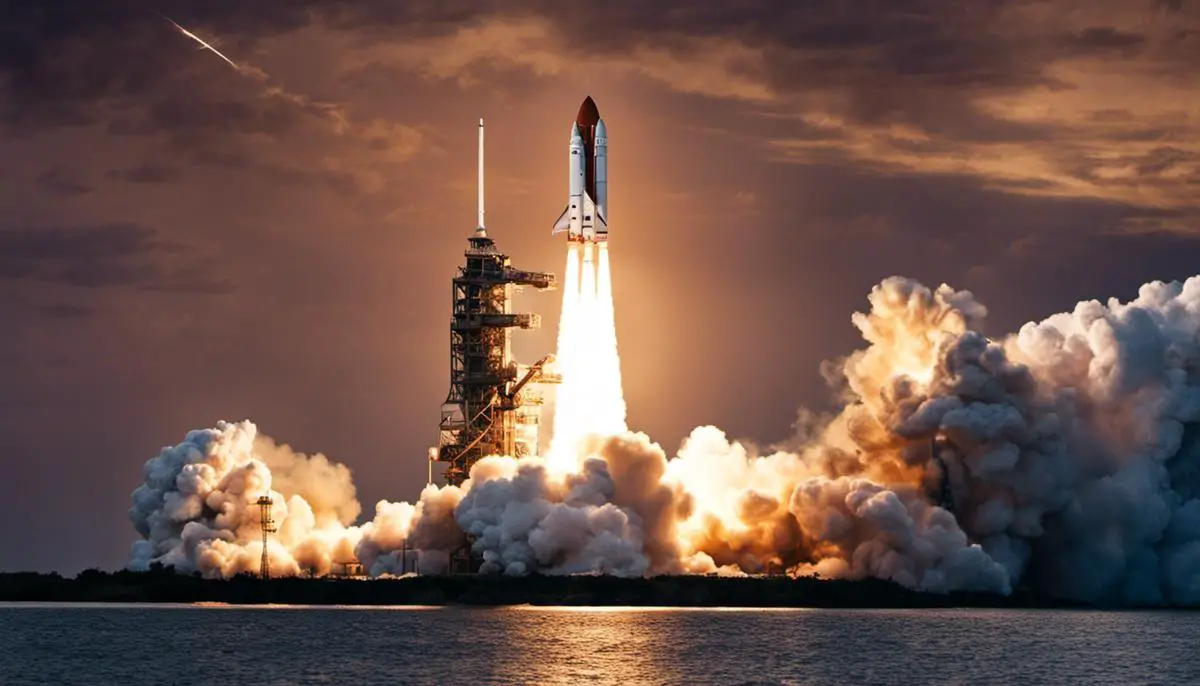At the height of the Cold War, amidst stirring political tensions and societal transformations, the United States orchestrated one of humanity’s most remarkable achievements. The Apollo Program, a grand effort to put man on the moon, is the embodiment of human resolve and ingenuity. This deep dive into the multi-faceted saga of the Apollo missions elucidates the significant events, the key people, technological feats, and the global reaction that unfolded as we embarked on this uncharted journey. It explores the exhilarating lift-off of Apollo 11, the courage and determination of Armstrong, Collins, and Aldrin, and the giant leap for mankind made through the first moon landing. Furthermore, we traverse through subsequent voyages vividly detailing the series of transformative scientific discoveries and near disasters that all played a significant role in this epoch-making endeavor.
Contents
Background and Beginning of Apollo Program
The Apollo Program
The Apollo Program was an initiative by the United States’ National Aeronautics and Space Administration (NASA) where 12 astronauts successfully landed on the moon between 1969 and 1972. The program took root due to the Cold War rivalry between the United States and the Soviet Union during that period, as both superpowers sought dominance in space exploration. The program’s goal was outlined by President John F. Kennedy in1961 when he announced a national goal of “landing a man on the moon and returning him safely to the earth” before the end of the decade.
Key figures in the Apollo Program
Key figures in the Apollo Program included NASA astronauts and administrators. Astronauts such as Neil Armstrong, Buzz Aldrin, and Michael Collins became household names due to their pivotal roles in the Apollo 11 mission, which first landed man on the moon. Leaders like James E. Webb, the NASA administrator from 1961 to 1968, also played important roles in shaping the program.
Several initial Apollo missions
The subsequent missions, Apollo 4, 5, and 6, were unmanned flights ensuring the Saturn V launch vehicle and the lunar module were ready for human spaceflight. Apollo 7 was the first manned mission in the program and tested the command module in low Earth orbit. The Apollo 8 and Apollo 10 missions successfully orbited the moon and returned safely, setting the stage for the culmination of the program, the Apollo 11 mission.
The Apollo Program’s technological advancements
The Apollo Program was characterised by significant technological advancements. The lunar module, a spacecraft specifically designed to land on the moon’s surface, was developed. The Saturn V rocket, the tallest, heaviest, and most powerful rocket ever produced, was also created during this time. Such developments, however, did not come without their share of challenges. Along with the tragedy of Apollo 1, there were several instances of technical problems and near misses.
The challenge of achieving a lunar landing
One of the central challenges was achieving a lunar landing. Not only did the lunar module have to land on a rocky and uneven surface, but it also had to take off again in the lunar module’s ascent stage to rendezvous with the orbiting command module. Only then could the astronauts return to Earth.
The challenge of safe re-entry and landing on Earth
Another crucial challenge was ensuring the safe re-entry and landing on Earth. The crewed capsule needed to survive intense heat upon re-entry into the Earth’s atmosphere, followed by a splashdown in the ocean where recovery ships awaited.
Communication challenges
Communicating across the vast distance between the Earth and the moon also presented a significant technical hurdle. NASA developed a network of Earth-based receiving stations to track and communicate with the spacecraft. The system enabled the public to watch the moon landing as it happened on July 20, 1969, when Neil Armstrong took humanity’s first steps on the moon.
Enduring Legacy
The Apollo Program overcame immense obstacles and challenges to stand as an extraordinary feat in the ever-evolving narrative of human history. Its impact is found in the bold ambitions it manifested, the groundbreaking innovations it produced, and the remarkable technological advances it jumpstarted. It forever broadened our understanding of our potential capabilities and cast a long-lasting shadow on the landscape of space exploration.
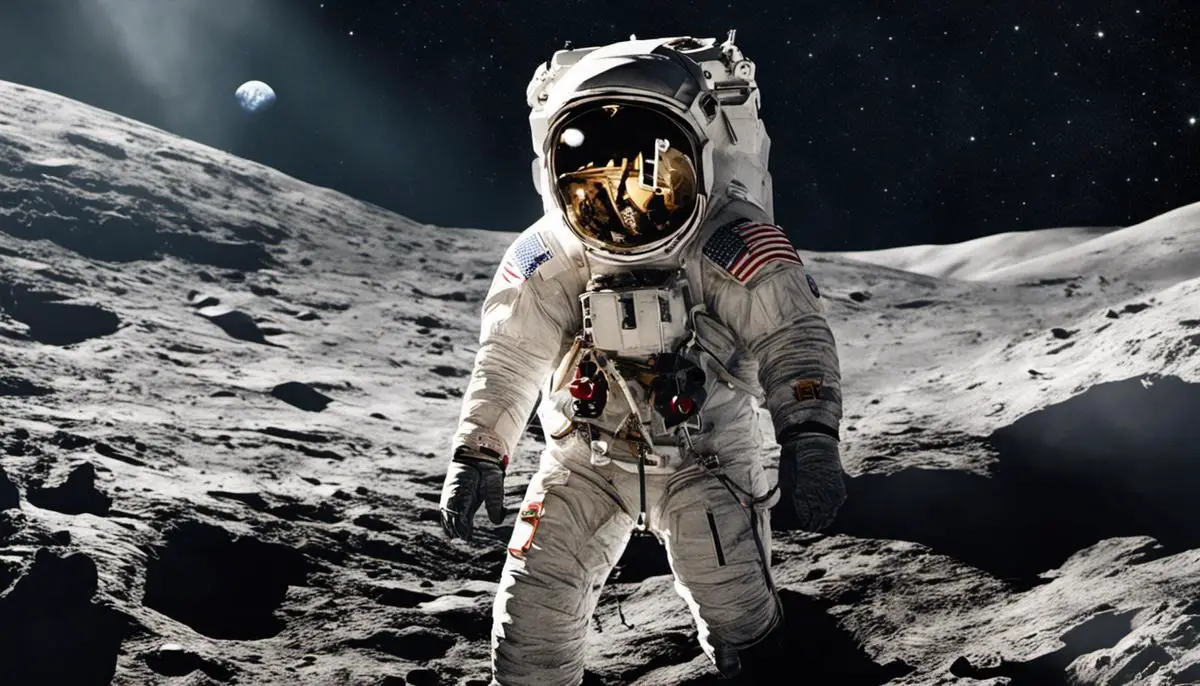
Apollo 11: The First Manned Moon Landing
Apollo 11: The Team and Their Training
The much-anticipated Apollo 11 mission assembled three of NASA’s most seasoned astronauts: civilian and mission commander Neil Armstrong, lunar module pilot and Air Force Colonel Edwin E. “Buzz” Aldrin Jr., and command module pilot and Army Colonel Michael Collins. Armstrong was a proficient test pilot with experience in over 200 distinct aircraft models, while Aldrin was proficient in orbital mechanics and Collins had a wealth of expertise in spacecraft operations.
Training for the mission was all-encompassing and was conducted with exacting attention to detail. It encompassed everything from spacecraft systems and navigation to survival skills and vigorous physical conditioning. Armstrong and Aldrin, who were lined up to execute the monumental lunar landing, spent a significant amount of time practicing in a lunar module simulator, refining the intricate task of landing on the moon’s terrain.
The Launch and Lunar Landing
The Apollo 11 mission was launched from Kennedy Space Center in Florida on July 16, 1969. After reaching the Earth’s orbit, the spacecraft spent around 76 hours to travel the approximate quarter-million miles to lunar orbit.
On July 20, the lunar module separated from the command module for its descent to the lunar surface. Powering through challenges like computer alarms and fuel problems, Armstrong piloted the module to a safe landing at a site he named Tranquility Base.
Armstrong was the first to exit the spacecraft, making the historic “That’s one small step for [a] man, one giant leap for mankind” remark as he set foot on the moon. He was soon followed by Aldrin and they spent about two and a half hours on the lunar surface, performing experiments, collecting samples, and setting up equipment for future missions.
Historic Moments and Global Impact
The world was collectively holding its breath as Apollo 11 unfolded. With advancements in technology, hundreds of millions were able to witness Armstrong and Aldrin’s steps on the moon through live telecasts. Their lunar exploration was watched by a staggering estimated audience of 600 million people, accounting for approximately a fifth of the global population at that time.
The successful landing of Apollo 11 was a monumental achievement that illustrated the potential of not only America but humanity as a whole. This marked a turning point in our collective history, celebrating the limitless potential of human advancement. The international community rejoiced together at this milestone, welcoming the astronauts as heroes upon their return home.
Apollo 11’s crew played more than just a passive role in their expedition. Armstrong, Aldrin, and Collins were crucial to the navigational decisions and problem-solving aspects, which made their experience extraordinary. The joy and high-pressure situational demands they encountered etched their lunar endeavor as an awe-inspiring odyssey in the annals of human exploration.
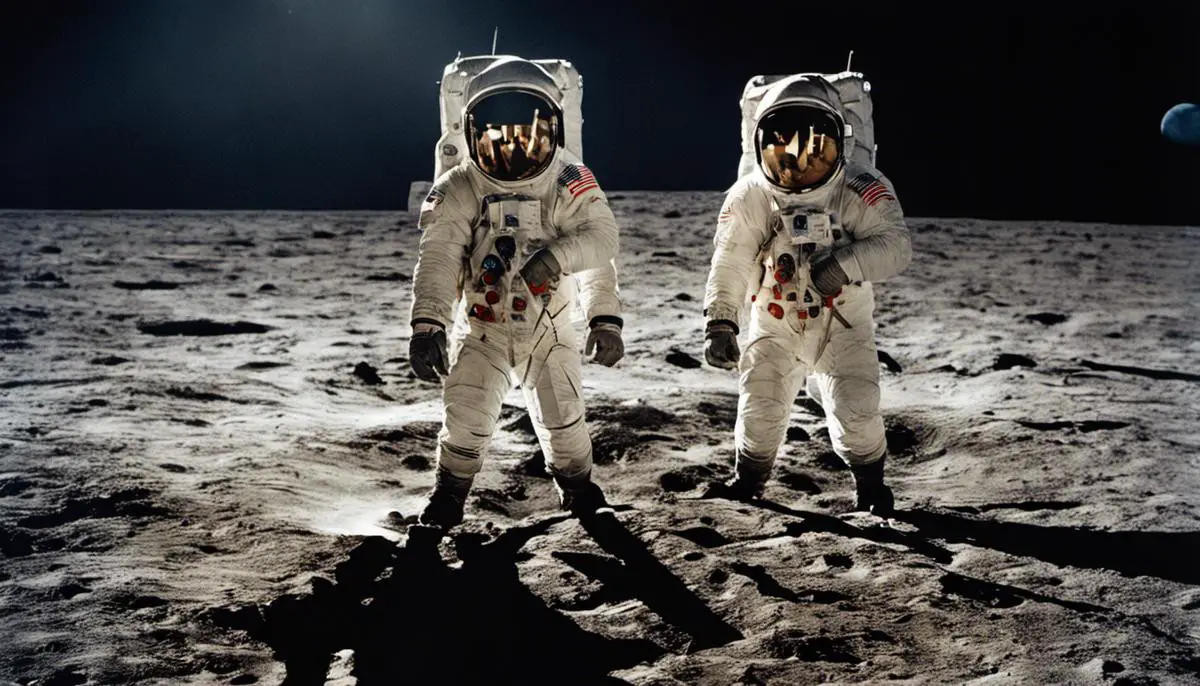
Subsequent Missions: Apollo 12 to 17
The Voyage of Apollo 12
NASA, riding high on the successful Apollo 11 mission, embarked on their next lunar expedition with Apollo 12, launched on November 14, 1969. Astronauts Charles Conrad Jr. and Alan Bean undertook an even more ambitious moonwalk, where they spent close to eight hours on the lunar surface. Their mission was set in the Ocean of Storms, a vast lunar mare. Here they carried out a range of experiments, collected lunar samples, and installed cutting-edge instruments, including a seismometer to record moonquakes and a device to analyze lunar dust.
Apollo 13: The “Successful Failure”
The Apollo 13 mission, launched on April 11, 1970, was known as a “successful failure.” Its intended goal was to land in the Fra Mauro area—a mission that was later reassigned to Apollo 14 due to the life-threatening crisis that forced Apollo 13 to abort its lunar landing. About 56 hours into flight, a significant technical malfunction caused a loss of power and cabin heat, which led to a critical situation. The safe return of astronauts James A. Lovell Jr., John L. Swigert Jr., and Fred W. Haise Jr. to Earth is regarded as a testimony to human ingenuity and resolve.
Apollo 13 Investigation and Changes
The near-disaster of Apollo 13 led to major modifications in the design and arrangement of flight hardware. The accident was a result of an explosion in one of the spacecraft’s oxygen tanks. The investigation determined that a design fault in the tank’s stirrer, combined with a previously damaged Teflon wire, was the cause of the explosion. Subsequent Apollo missions incorporated hardened command modules, safer batteries, and covered wiring to prevent similar disasters.
Apollo 14 Mission
After the near-disaster of Apollo 13, Apollo 14 successfully landed in the Fra Mauro region, the target site of Apollo 13. Astronauts Alan Shepard and Edgar Mitchell conducted experiments on the lunar surface while Stuart Roosa orbited overhead in the command module. They returned almost 100 pounds of lunar samples to Earth, providing crucial information that greatly contributed to our understanding of lunar geology.
Apollo 15: The First Lunar Rover
During the Apollo 15 mission, NASA introduced the “Lunar Rover,” which significantly increased the area astronauts could cover during extravehicular activities. Astronauts David Scott and James Irwin explored the lunar terrain while Alfred Worden orbited the Moon in the command module. This mission was the first of the “J missions,” which returned larger amounts of lunar material and allowed astronauts to spend a longer time on the Moon.
The Apollo Program’s Concluding Voyages
The latter voyages of the Apollo program encompassed Apollo missions 16 and 17. Both undertook considerable geological study. For Apollo 16, astronauts John Young and Charles Duke embarked on a lunar exploration in the Descartes region. Meanwhile, for Apollo 17, the exploration shifted to the Taurus-Littrow by Eugene Cernan and Harrison Schmitt. Additionally, Harrison Schmitt, a trained geologist, became the pioneer scientist-astronaut through Apollo 17. Significantly, NASA completed the Apollo program’s run with an abundant supply of scientific data and a tremendous 842 pounds of lunar specimens.
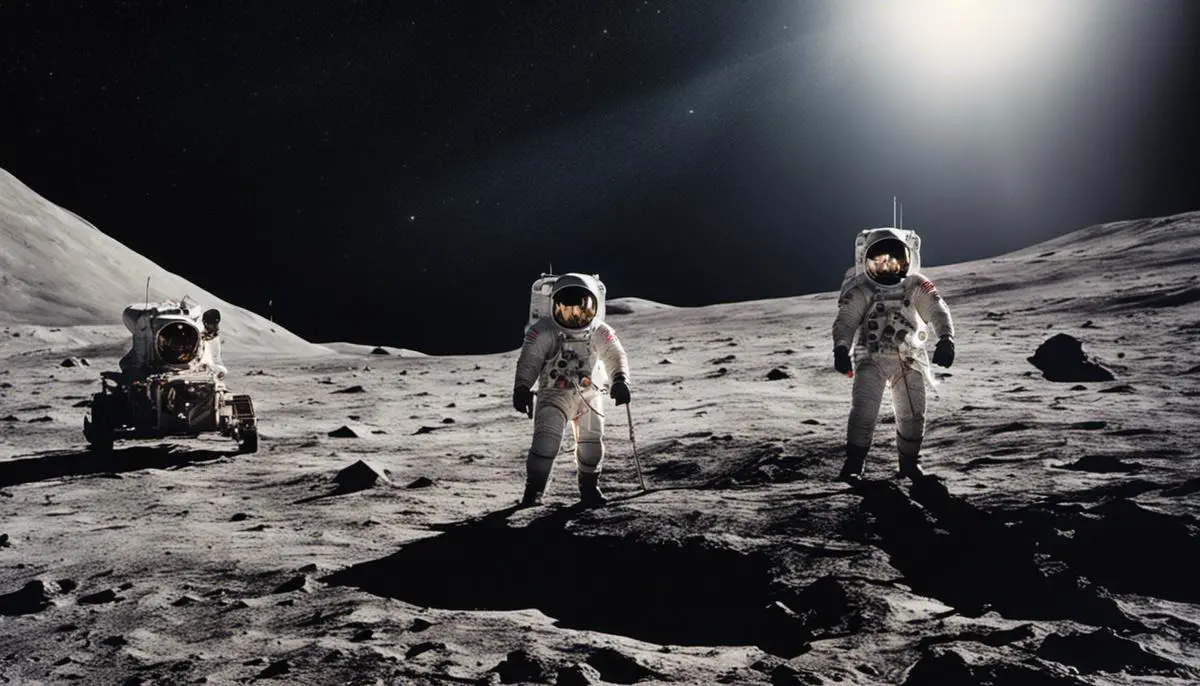
Legacy and Impact of the Apollo Program
The Apollo Missions and Their Enduring Impact
The Apollo expeditions were groundbreaking NASA initiatives that marked the dawn of manned moon exploration. They not only forward-rolled the wheels of technological advancement but also broadened the horizons of lunar science understanding while inspiring multitudes. Furthermore, these missions laid a crucial foundation stone for ongoing ventures into space.
The technological strides triggered by the Apollo program have been revolutionary. These developments innovated and upgraded aspects of telecommunications, navigation, and computer technology. Numerous such innovations were introduced to ordinary life, enhancing miniaturized electronics and precision manufacturing.
The Apollo missions contributed significantly to the enhancement of scientific knowledge. Lunar stones brought back by astronauts became the keys to unlocking mysteries of the moon’s geological past and evolution. The decades-long data from experiments, situated on the moon by the Apollo missions, continue to contribute to lunar science today.
The political implications of the Apollo missions were notable. Being significant tentpoles of the Cold War, these missions served as powerful showcases of America’s scientific capacity and ideological edge over the Soviet Union amid intense rivalry. The space race turned into an emblem of national pride and an illustration of the achievements possible with a determined effort, concentration, and resource allocation.
On the cultural front, the Apollo missions sparked our ability to dream beyond boundaries. The simple, yet profound images of human footprints etched on the lunar surface encapsulate our potential to navigate technological obstacles and chart new frontiers.
Apollo Missions and the Continuation of Space Exploration
Today, the legacy of the Apollo missions is evident in the continuous exploration of the moon and beyond. The international lunar research stations, for instance, are a direct descendant of the Apollo lunar landings. They have laid the foundation for future manned missions to Mars and ongoing exploration of the outer solar system.
Controversies and Conspiracy Theories
However, the Apollo missions did not come without controversy. Since the lunar landing in 1969, conspiracy theories have emerged, suggesting that the moon landing was a hoax staged by the U.S. government to win the space race. Critics pointed out perceived anomalies in the mission’s photographs and film footage. Despite substantial counter-evidence and testimonies from thousands of people who worked on the project, these conspiracy theories still persist in some circles today.
In conclusion
The legacy of the Apollo missions is far-reaching, pioneering technological advances, contributing to scientific discovery, shaping geopolitics, and inspiring generations to dream. Despite the controversies that followed, their impact on space exploration is immeasurable, paving the way for humanity’s ongoing journeys to the moon and beyond.
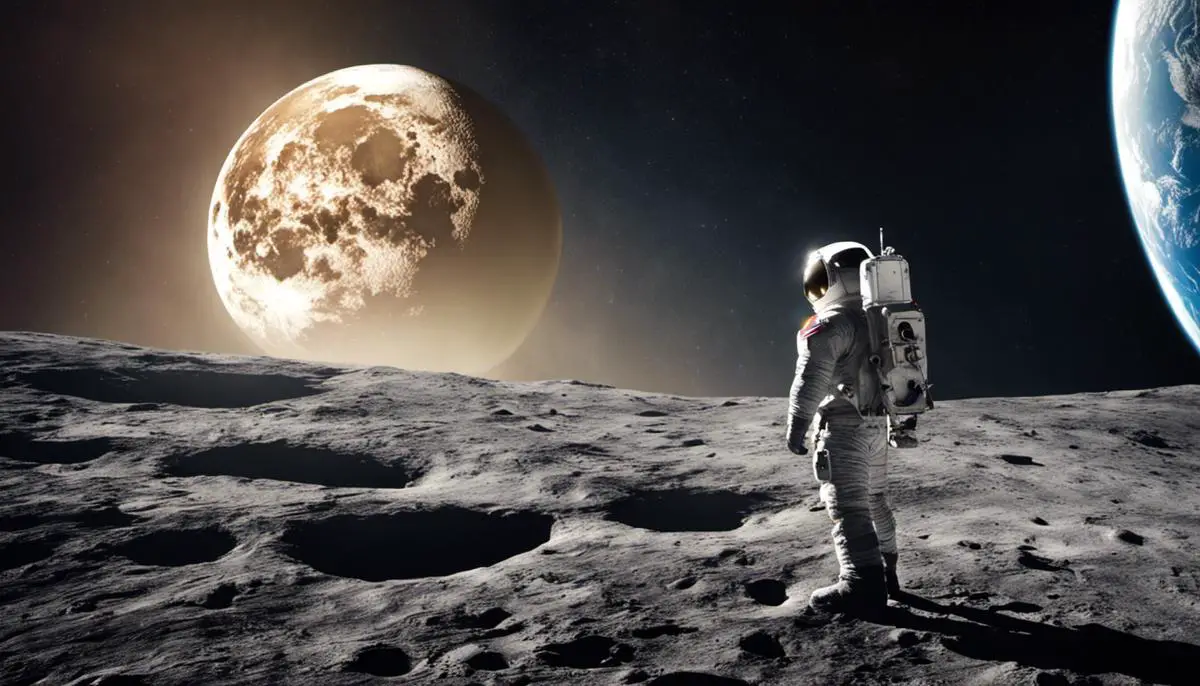
The legacy of the Apollo program is a testament to our insatiable curiosity and indomitable spirit to explore the unknown. Throughout the missions, we see the resilience of humanity to adapt, learn, and grow, but equally, it reflects the political dynamics that spurred such a grand endeavor. Despite the array of controversies and conspiracies, the Apollo missions undeniably served as a catalyst for technological advancements and fostered a new phase of space exploration. Addressing the impact on society, science, and politics, we observe the profound influence the moon landing left on our world, and as we look to the stars, we realize the unflinching influence the Apollo Program continues to have on our pursuit to the moon and beyond.

With a passion for unraveling the mysteries of the moon, Dr. Luna Sterling is a highly-respected astrophysicist, a dedicated lunar enthusiast, and a captivating blogger. After earning her Ph.D. in Astrophysics from the Massachusetts Institute of Technology (MIT), she served as a lead scientist and mission planner for NASA, contributing significantly to various lunar missions.
For over two decades, Luna has been at the forefront of lunar science, pushing boundaries and pioneering discoveries that have enriched our understanding of the moon’s geological history. However, it’s her infectious enthusiasm for all things lunar that truly sets her apart.
In an endeavor to bring the moon closer to everyone, Luna started her blog, “Luna’s Lens: A Closer Look at the Moon.” With this platform, she offers a unique blend of intriguing moon facts, updates on lunar missions, and personal anecdotes from her experiences in the field, all told in an engaging and accessible manner.
Luna’s unique blend of scientific expertise and warm, humorous writing style has transformed complex astrophysics into compelling narratives that captivate her audience. As a gifted communicator, she leverages her knowledge and experience to relate scientific facts to everyday life, thus making her blog a must-read for both seasoned space enthusiasts and curious newcomers.
Interactive and inviting, Luna frequently encourages reader engagement through thought-provoking discussions and a monthly ‘Ask Dr. Luna’ feature, where she personally answers questions about the moon and space exploration. A celestial storyteller at heart, Dr. Luna Sterling’s passion for the moon is as vast as the cosmos she explores, making her an invaluable beacon in the world of lunar science.
